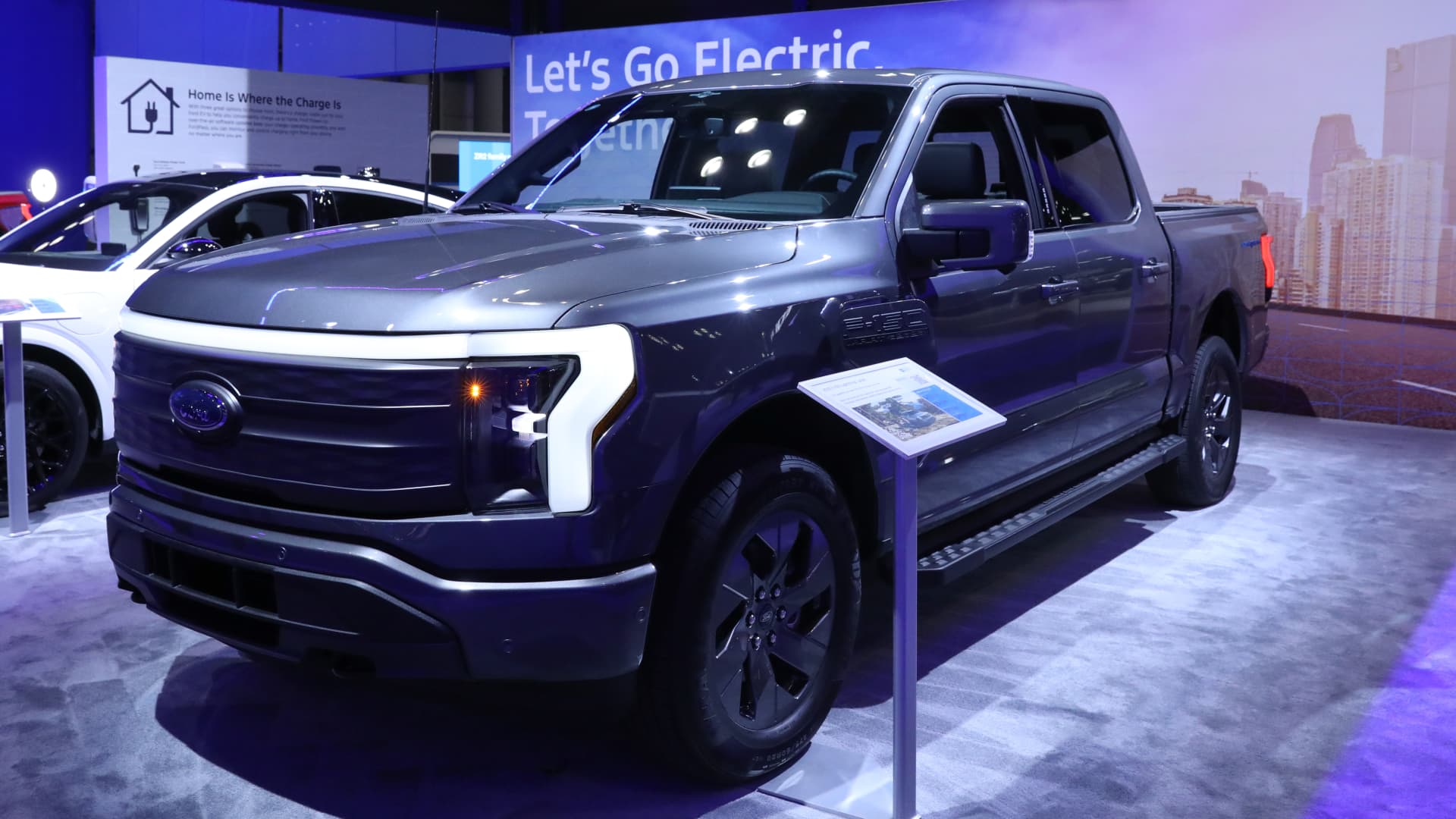
The F-150 Lightning on display at the New York International Auto Show on March 28, 2024.
Danielle DeVries | CNBC
DEARBORN, Mich. — Ford Motor is lowering the starting prices of some all-electric F-150 Lightning pickup trucks as it prepares to resume shipping the vehicles after quality issues.
The included models are expected to ship later this month for between $2,000 and $5,500 less than before the automaker halted shipments for undisclosed quality issues in early February.
The biggest price decrease is on the pickup’s mid-level Flash trim, now priced $5,500 lower at $67,995. That was followed by $2,500 off Lariat models, now priced at $74,995, as well as a $2,000 reduction for XLT models, with a new price of $62,995.
Prices on the $54,995 entry-level Pro model and an $84,995 top-end Platinum model were unchanged.
The cost reductions are the latest electric vehicle price changes for the broader automotive industry amid slower-than-expected consumer adoption. Ford’s cuts come three months after it adjusted Lightning prices, including increasing some model prices.
“It’s part of the normal response to both where the market place is, our supply and where our inventory sits … which we do all the time,” Ford Chief Operating Officer Kumar Galhotra told reporters on the sidelines of an event at its F-150 plant in Dearborn, Michigan. “New technology like electric vehicles takes some time to find the right sweet spot and the balance.”
The new Ford F-150 truck goes through the assembly line at the Ford Dearborn Plant on April 11, 2024 in Dearborn, Michigan.
Bill Pugliano | Getty Images
Galhotra declined to comment on the nature of the problems that caused the stop-shipment as well as on why gas and diesel versions of the F-150 were held for months after production started. He broadly said engineers constantly write software onto modules for the vehicles, which are all connected with modems, to detect any anomalies and determine defects.
“There were some several small issues,” Galhotra said. “Once we find the solution to them, we fix them and then we ship. … We try to find every single thing that we can.”
In media materials released on Thursday, Ford referred to what it called an “unprecedented truck offensive,” saying it assembled 144,000 F-150 full-size and Ranger midsize pickups during the first quarter of the year that are making their way to dealers and customers. Roughly 92% of the pickups built were F-150 pickups.
Having a large number of vehicles is not a good thing for an automaker. It means more costs on their books and delayed deliveries to dealers and customers.
Automotive News last month reported Ford has revived a controversial practice of goal-based incentives for dealers called stair-step programs to increase sales for the vehicles. The automaker, which did not immediately respond for comment on the program, since February has been offering retailers escalating cash bonuses if they reach and exceed monthly F-150 sales targets, Automotive News reported.
Ford last year also delayed shipments of its larger Super Duty pickups, which are siblings to the F-150, for months to do additional quality checks and inspections following issues with recent launches that led to recalls and high warranty costs.
“We’re going to prioritize quality, always. These are very complex vehicles with complex launches. We want to take the time to make sure everything is good, everything is perfect,” he said. “And when we’re satisfied with the level of quality, then and only then we’ll start shipping to our customers.”
Ford has said its warranty costs contribute to a cost disadvantage of $7 billion to $8 billion annually compared to its traditional competitors.
